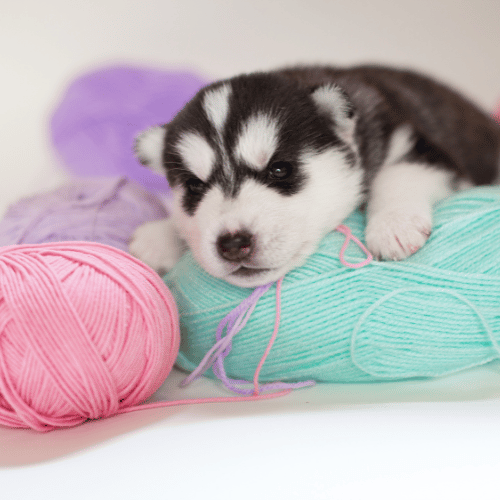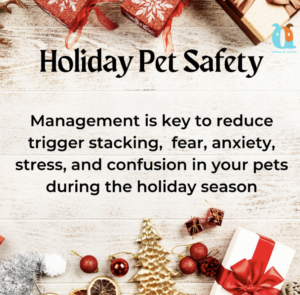How Many Times a Day Should a Dog Poop?
As a dog owner, one of the most common and inevitable tasks you face is cleaning up after your dog. But understanding how many times a day should a dog poop is more than just knowing when to grab your pooper scooper. It’s a vital part of monitoring your dog’s health. The frequency, consistency, and overall behavior of your dog’s bowel movements can provide insights into their digestive health, diet, and even emotional well-being.
In this blog, we will dive deep into the factors influencing your dog’s pooping habits, when to be concerned, and how you can support your dog’s digestive health. We’ll go beyond the basics and provide actionable advice to help you maintain a regular, healthy pooping schedule for your furry friend. Whether you’re a first-time dog owner or experienced in pet care, this guide will ensure your dog’s bathroom habits stay on track.
How Often Should a Dog Poop?
Before getting into the factors that can influence pooping frequency, it’s important to establish a general understanding of how often dogs should poop. The answer to how many times a day should a dog poop varies by a few factors, but there are some basic guidelines:
-
Adult Dogs: Most adult dogs poop between once or twice a day. Some may go as much as three times per day, especially if they have a high-fiber diet.
-
Puppies: Puppies typically poop more often due to their faster metabolism. They may need to go as many as 4-5 times a day, particularly after meals.
-
Senior Dogs: Senior dogs usually poop once a day or sometimes less frequently. As dogs age, their digestive systems slow down, which can lead to less frequent bowel movements.
Remember, these are general guidelines. Your dog’s pooping habits may differ based on other factors such as size, diet, and exercise levels. It’s essential to understand what’s normal for your dog so you can quickly spot any irregularities.
Factors That Influence Your Dog’s Pooping Frequency
While how many times a day should a dog poop is often dictated by general age-related patterns, several factors contribute to how frequently your dog needs to go. Let’s explore these factors more closely.
Age
Age plays a significant role in determining pooping frequency. Puppies, with their fast metabolism, have frequent bathroom breaks. As they grow older, their digestive system matures, and they will likely poop less often.
Senior dogs often experience a slowdown in digestion, so they may not need to go as frequently. However, this doesn’t mean you should ignore any changes in their schedule. Some senior dogs can also experience constipation or digestive issues that may affect their bathroom routine.
Diet
Diet is one of the most influential factors in how many times a day should a dog poop. A diet that is high in fiber or rich in certain nutrients may result in more frequent pooping. Fiber plays a critical role in regulating bowel movements by aiding digestion and promoting regularity. If your dog’s diet contains poor-quality ingredients, such as fillers and additives, their digestion may be sluggish, leading to fewer poops.
-
A high-protein diet can sometimes lead to firmer stools, while a fiber-rich diet may lead to more frequent pooping.
-
Changes in your dog’s diet—whether it’s due to new food or the introduction of treats—can disrupt their routine and lead to a sudden increase in pooping frequency or even diarrhea.
Exercise
Exercise is another major factor in regulating your dog’s bathroom habits. Physical activity helps stimulate digestion and encourages regular bowel movements. Active dogs tend to have more consistent bathroom routines. If your dog is more sedentary, they may experience irregular pooping schedules, as their digestive system is not being stimulated as much.
A lack of exercise, particularly in dogs that are overweight or not walked regularly, can lead to slower digestion and potential constipation. On the other hand, too much activity or strenuous exercise can sometimes lead to increased frequency.
Health Issues
Various health issues, such as gastrointestinal disorders, parasites, or medication, can significantly affect how many times a day should a dog poop. Dogs with sensitive stomachs, food allergies, or digestive problems may experience more frequent pooping or diarrhea. Conversely, dogs that suffer from constipation, an intestinal blockage, or other digestive issues may go for extended periods without pooping.
If your dog is on medication, especially antibiotics or steroids, these can alter their pooping frequency. Some medications may cause your dog to poop more frequently, while others can cause constipation. Always consult with your vet if you notice drastic changes in your dog’s bowel movements when starting or changing medications.
How to Track Your Dog’s Pooping Schedule
Understanding how many times a day should a dog poop becomes easier when you track your dog’s habits. By monitoring your dog’s bathroom routine, you can detect any irregularities or potential health concerns early on. Here’s how you can keep track:
-
Log Your Dog’s Pooping Schedule: Take note of the times of day your dog typically goes to the bathroom. Is it immediately after meals, or do they need to go shortly after waking up? This can help establish a pattern.
-
Monitor Stool Consistency: Pay attention to the consistency and color of your dog’s stool. Healthy dog poop should be firm and brown. If the stool becomes watery, hard, or changes color, it could be a sign of digestive issues.
-
Consider Their Diet: If you’ve recently changed your dog’s food, keep an eye on any changes in their bathroom habits. Switching to a new food can lead to temporary changes in pooping frequency as their system adjusts.
-
Observe Their Behavior: If your dog is straining to poop or seems uncomfortable, it could be a sign of constipation or another health issue.
If you have a dog that spends time in the yard or in a dog park, it can be difficult to track their bathroom habits. Try to accompany your dog every time they go outside to make sure you monitor how often they poop and their consistency.
When to Worry About Changes in Your Dog’s Pooping Routine
Changes in your dog’s bathroom habits could indicate a health concern. If you notice your dog’s pooping routine differs from what’s normal for them, here’s when you should take action:
Not Pooping Enough
If your dog goes more than 24-36 hours without pooping, you should be concerned. While occasional delays may not be alarming, a lack of bowel movement for an extended period can be a sign of constipation or an intestinal blockage. If your dog seems uncomfortable or is straining without producing stool, contact your veterinarian.
Pooping Too Much
On the other hand, if your dog starts pooping more frequently, this could be due to overeating, a dietary change, or stress. However, if your dog’s pooping frequency increases without any obvious explanation, it might signal a health issue, such as gastrointestinal problems or an infection. Keep an eye out for any signs of diarrhea, as well, which may require immediate veterinary attention.
Change in Stool Consistency or Color
If your dog’s stool becomes loose or watery, it could indicate gastrointestinal upset, food intolerance, or stress. Similarly, stool that is hard and dry may point to dehydration or constipation. More concerning, however, is if you notice any unusual colors, such as black (which could suggest internal bleeding) or green (which might indicate gallbladder problems). Any significant changes in stool consistency or color should prompt a call to your veterinarian.
How Long After Eating Does a Dog Poop?
Understanding when your dog is most likely to need a bathroom break after eating can help you plan their bathroom schedule. Most dogs will typically poop within 30 minutes to an hour after eating. This is especially true if they eat a full meal, as digestion stimulates bowel movements.
-
Meal Size: Smaller meals are typically digested faster, which means your dog may need to go to the bathroom sooner.
-
Puppies: Puppies tend to poop quickly after eating, often within 20-30 minutes of finishing their meal.
By syncing your walks with meal times, you can ensure your dog has regular bathroom breaks and maintains a healthy pooping schedule.
What Does Your Dog’s Poop Say About Their Health?
Your dog’s stool can reveal a lot about their health, so it’s essential to understand what’s normal and what’s not. Here’s what different types of stool can mean:
-
Normal Poop: Healthy dog poop should be firm, moist, and brown in color. It should hold its shape when picked up.
-
Loose or Watery Stool: This could indicate gastrointestinal upset, stress, or a food intolerance.
-
Hard or Dry Stool: This might be a sign of dehydration or constipation. Regular bowel movements and hydration are essential for your dog’s health.
-
Unusual Colors: Stool colors can offer insight into more serious health issues:
-
Green: Gallbladder problems or stress.
-
Yellow/Orange: Liver or pancreas issues, food intolerance.
-
Red: Possible bleeding in the stool (injury, infection, etc.).
-
Black: Likely internal bleeding (upper GI) and requires immediate attention.
-
Always monitor your dog’s stool for changes, especially if it deviates from the normal brown, compact stool.
When Should You Call a Vet for Dog Pooping Issues?
If you notice any of the following signs, it’s time to consult a veterinarian:
-
Lethargy or Vomiting: If your dog is acting lethargic, vomiting, or showing signs of discomfort while trying to poop, seek professional help.
-
Straining to Poop: If your dog is straining but not producing stool, it may have constipation or an obstruction.
-
Blood in Stool: If there’s visible blood in the stool, immediate veterinary attention is required.
-
Persistent Diarrhea: If your dog has diarrhea for more than 24 hours, it’s crucial to see a vet to determine the cause and prevent dehydration.
How to Support Your Dog’s Digestion and Poop Schedule
You can help support your dog’s digestion and pooping schedule by following these tips:
-
Feed a Balanced Diet: Ensure your dog’s food is high in quality and fiber to promote regular bowel movements.
-
Regular Exercise: Keep your dog physically active to help stimulate their digestive system.
-
Proper Portion Control: Avoid overfeeding your dog, which can lead to excessive pooping and gastrointestinal issues.
Understanding how many times a day should a dog poop is essential for monitoring your dog’s health. By keeping track of your dog’s pooping habits, you can catch any issues early and take proactive steps to address them. Whether you’re a new dog owner or experienced pet parent, tracking your dog’s pooping schedule ensures that you provide the best care possible.
Why Choose Scoopology for Your Ruston Pooper Scooper Needs?
At Scoopology, we know how crucial it is to maintain a clean and safe yard for your pets. Our Ruston pooper scooper service is designed to make your life easier, so you can enjoy more time with your pets and less time cleaning up after them. Here’s why you should choose us:
-
Convenient Scheduling: We offer flexible scheduling to fit your lifestyle. Whether you need a one-time cleanup or regular service, we’ve got you covered.
-
Eco-Friendly Waste Disposal: We use eco-friendly disposal methods to responsibly manage pet waste, ensuring Ruston stays clean and green.
-
Professional Service: Our trained team provides top-quality pooper scooper services, ensuring your yard is clean and safe for your pets.
How Our Pet Waste Removal Service in Ruston Works
-
Contact Us: Call (360) 743-3926 or request an instant quote online
-
Schedule Your Service: We’ll work with you to find a service that fits your needs and schedule.
-
We Handle the Dirty Work: Our team will scoop all dog poop from your yard, leaving it clean and waste-free.
Choose Scoopology for your Ruston pooper scooper needs and enjoy a cleaner, safer yard for your pets.











